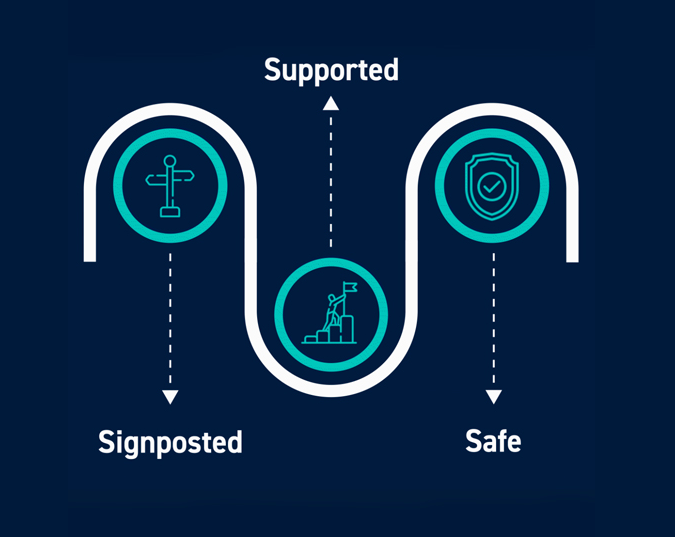We have an in-house team who handles all of our ‘training’! We have a provider with whom we are already working.
We work with those who provide the cheapest quotes. We don’t have any ‘changes’ happening at the moment so we don’t need this right now. We have cut our ‘training’ budget.
Are these some of the reasons you cite as to why not to invest in the support of external consultants and training providers to support the delivery of your organisation’s strategy?
These are all of the reasons I hear as to why it may not be the right time to avail of the services of O’Brien Learning Solutions. Do I take it personally? No, of course not! But do I feel that there is something that these companies don’t understand about why they would benefit from working with someone like me? Yes, absolutely. This is why I decided to tackle each of these objections in this article.
Here, I will share my knowledge and experience, aimed to help you to make an informed decision when deciding when and whom to hire to support your organisational development needs.
- We have an in-house team who handles all of our ‘training’
Pro’s
- This can be seen to be a more cost-effective option than in investing in external consultants. It is understandable that organisations may want to maximise to cost of the internal L&D resource by channelling 100% of their training and development requirements through this internal function.
- The internal training team will already have relationships built with internal stakeholders and employees alike.
- The training team may have superior product and technical knowledge which can serve well when providing in-house training and allowing for real-life examples during training modules.
- The team, under the leadership of their senior leader should have sight and knowledge of the organisational strategy, with all of their endeavours lined up to support these goals
Con’s
- Depending on the reputation of the internal training team, their interventions may be under / over-valued, with little external benchmarking to sense checking quality, effectiveness and return on investment.
- Due to the focus on operational deliverables and limited resources, there may be a lack of time to focus on creativity and innovation, resulting in a stagnant approach to internal course delivery.
- The strategic view point of the team’s direction and remit may be limited given the ‘firefighting’ element that can accompany an internal agenda, which is typically driven by shifting operational needs and requirements
- Due to the confidential nature of executive coaching it may not always be appropriate or suitable for the members of the internal L&D team to provide coaching to the senior executive level.
Recommendations – Use the expertise of the internal team along with the unbiased insights of the external consultants to take a ‘partnership approach’ to the L&D agenda. A mix of internal knowledge and external expertise can really bring the learning strategy to life. Only invest on external consultants when it is envisaged that the external agency can bring something to the table that cannot otherwise be found within the internal T&D function of itself.
- We have a provider with whom we are already working
Pro’s
- An existing provider can certainly provide plenty of ongoing, ad-hoc, additional support outside of the ‘contractual’ agreements
- The current provider will have an established relationship with key stakeholders and decision makers within the organisation
- The provider will understand the nuances within the business and the internal culture, that a new provider would need time to establish
- There may be a payment system which establishes preferred suppliers with a significant level of sign-off required, through which your current provider has already been through
Con’s
- You may or may not understand the return on investment that your current provider is bringing to the organisation, depending on whether this formed part of the initial contractual discussions.
- If your senior executive team does not fully value or engage with the current provider, they can be seen to be a ‘quick fix’ to issues within the organisation rather than a business partner with whom the senior team can look to for support on strategic deliverables.
- If your current provider has not done a sufficient ‘needs analysis’ activity, then the interventions they are running may make little to no difference to team behaviour and deliverables over a sustained and consistent period of time
- Over-familiarity may result in a lack of creativity. The provider should always look to be thinking outside of the box on your behalf.
Recommendations
If you have a sustained relationship over a period of time, you should have built sufficient trust and rapport with your current provider. This ideally will put you in a position to be able to ask for what you need. E.g. ideas for solutions to current behavioural issues and lack of engagement within the organisation. Or to simply ask for changes to content, format, timings etc of current offerings. Additionally, it can be worth looking at having a second provider, who can deliver in area of speciality other than your main provider. E.g. you may have one provider whom you use to run your management development programmes, and you may use a different provider to support your senior executive teams with coaching and development. It is also worth considering the relationship that your organisation has built with your current providers – are they a trusted, reliable provider who consistently meet and even exceed expectations? If yes, great! If not, it might be time to re-establish new contractual agreements with your provider, and to look outside in the marketplace for ideas in relation to other providers.
- We work with those who provide the cheapest quotes
Pro’s
- You get to tighten the purse strings and save money that can be spent elsewhere in the organisation
Con’s
- In my experience, in this industry ‘you get what you pay for’ and there is a risk when going with the cheapest option that you are wasting money entirely.
- If it’s a ‘tick the box’ exercise (i.e. you need to be seen to deliver a certain number of training hours to your employees) then you may be best staying with the cheapest provider
- However, if you are looking to effect changes in behaviour and productivity, the cheapest provider may not always be the best option
Recommendations
Check in with attendees – how are they finding the training? What are they really doing differently as a result? What value is this provider bringing to the table – you need to ask your staff these questions and be prepared to take action on the responses they may elicit.
- We don’t have any ‘changes’ taking place at the moment so we don’t need your support right now
Pro’s / Con’s
- Change is constant in business! I do not think there are any advantages to taking this stance, personally.
- However, it may be that you just do not recognise the changes that are taking place within your organisation therefore it might be worth revaluating your definition of ‘change’
- This section really is quite limited as I can’t see any advantage in taking the approach as one of ‘change does not affect us.
Recommendations
I specialise in helping organisations move through change effectively by educating and upskilling their entire workforce to easily and smoothly navigate through these periods of change. The term ‘Change’ can confuse people. Change can be anything from hiring a new manager to changing an entire operating system. I would challenge you to assess how your organisation handles change. Do you ask your people how they have been impacted by minor and major changes? I suggest holding a focus group to represent your employee cohorts, and simply asking people how they have been finding the last few months, as a starting point. You may be surprised at what will emerge. Teaming up with an organisation like O’Brien Learning Solutions can provide the added advantage of an external, unbiased facilitator to lead such a session. This can have the added impact of allowing attendees to ‘open up’ and be more honest as opposed to when their manager or senior leader may be asking the questions.
- We have cut our ‘training’ budget
Pro’s
- During recessionary times, the training and development budget is generally one of the first to be cut or to almost diminish entirely and this is understandable.
- Sometimes these decisions need to be made so as to allow other areas of the business to achieve targets and to deliver against objectives.
- This can be a good temporary measure to allow the business to perform financially, and is as mentioned, simply a necessary step that has to be taken during tough times.
Con’s
- Taking the focus off the organisational development agenda, over sustained periods of time, can have negative impacts on employee engagement and morale levels.
- Studies have clearly shown that employees who are highly engaged, are more likely to expend discretionary effort (i.e. ‘go the extra mile’ willingly) and are less likely to be absent due to ill health, burnout and stress related conditions.
- Cutting off the ability for employees to share learning experiences together can cut off essential opportunities for members of your teams to feel connected to each other and ‘part of’ an organisation who supports their needs.
- Additionally, removing training and coaching forums can remove opportunities for your teams to identify opportunities for creativity, process improvements and collaboration.
- By removing these opportunities for knowledge sharing and learning you must be aware that in time, there is a price to be paid.
Recommendations
Utilise internal training champion roles to provide ‘soft skills’ / behavioural training, where feasible. Make sure that the internal resources are maximised, but not just across the operational / technical training agenda. Ideally, keep conversations going in relation to personal development objectives, as part of the performance management process. Encourage ‘manager as coach’ type conversations during one to one sessions. Should you decide to invest in out-sourced training e.g. ‘Manager as Coach’ programme, be explicitly clear on the rationale for the programme and what the desired learning outcomes will be. Investigate the support of your local Skillnet Group – e.g. Next Level Skillnet based in Shannon, Co. Clare have provided funding to many of my clients for management development, coaching and mentoring programmes. This is a government funding subsidy with ‘no catch’. This is an option I would highly recommend for organisations who have a limited budget. Contact sue@nextlevel.ie for further information on how we could work together, with up to 50% funding available for your organisational development needs.

FREE RESOURCE - EVOLVE
COMPLETE OUR CULTURAL GAP ANALYSIS TOOL
Carry out an easy 3-step gap analysis now, which we will be happy to follow up with a free, no obligation virtual check-in.





